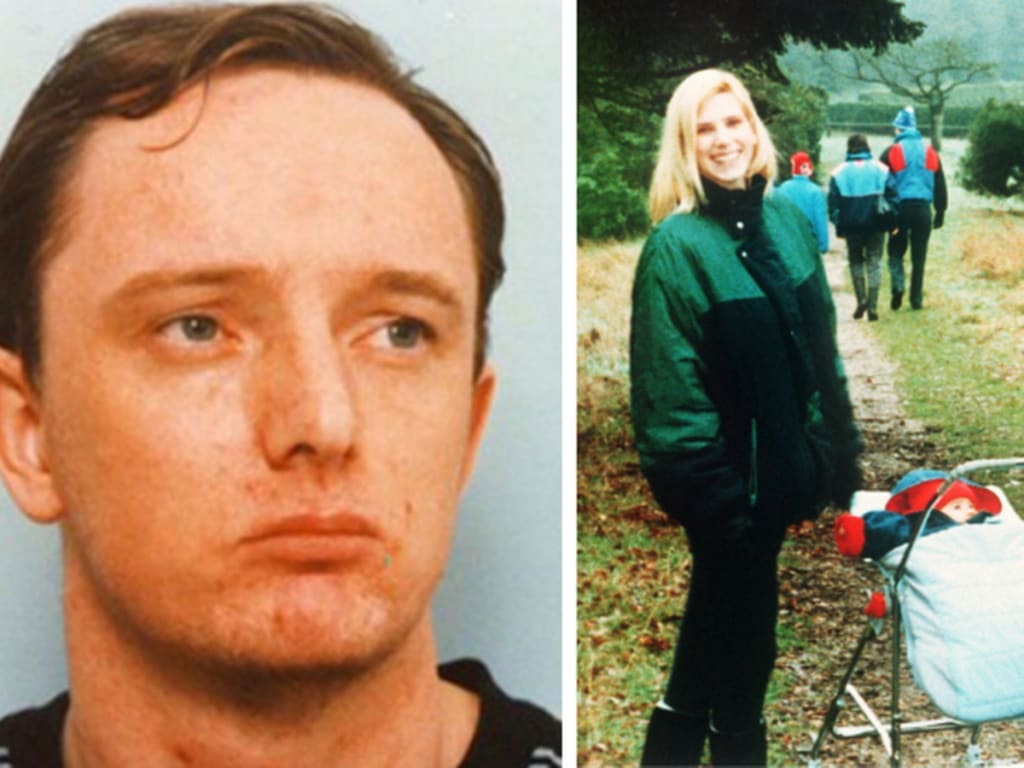The Green Chain Ripper: Unraveling the Horrific Crimes of Robert Napper
The Dark Journey of a Serial Killer and the Investigation that Spanned Over a Decade

In 1992, London was shocked by the brutal murder of 23-year-old Rachel Nickell on Wimbledon Common. The case would drag on for over a decade, with police initially focusing on the wrong suspect. It wasn't until advancements in DNA technology that the true perpetrator, serial rapist and murderer Robert Napper, was identified. This article dives into the details of Napper’s crimes, the investigation, and the lingering questions surrounding these horrific events.
The Murder of Rachel Nickell
On July 15, 1992, Rachel Nickell was attacked while walking with her young son on Wimbledon Common. She was stabbed 49 times and sexually assaulted. Her son was found clinging to her body, traumatized but physically unharmed. Despite a massive manhunt, the police zeroed in on Colin Stagg, a man who would later be proven innocent.
The Wrong Suspect: Colin Stagg
For ten years, Colin Stagg was the primary suspect in Rachel Nickell's murder. The police conducted an undercover operation, known as Operation Edzell, where an officer befriended Stagg and attempted to coax a confession out of him. However, Stagg consistently maintained his innocence, and DNA evidence later confirmed he was not the murderer.
Enter Robert Napper
In 2002, advancements in DNA technology allowed the police to re-examine the evidence from Rachel Nickell's case. They found a match in the criminal database: Robert Napper, a known serial rapist and murderer. At the time of Rachel's murder, Napper was 26 years old and had a history of violent crimes.
Napper’s Troubled Upbringing
Robert Napper was born on February 25, 1966, in Plumstead, southeast London. He was the oldest of four children in a household marked by severe domestic abuse. After his parents' divorce, Napper and his siblings were placed in foster care. During this period, he was diagnosed with Asperger's syndrome, now part of the autism spectrum.
Napper's childhood took a darker turn when he was sexually assaulted by a family friend during a camping trip. This incident profoundly affected him, leading to a dramatic change in his personality. He became withdrawn, reclusive, and increasingly violent towards his siblings.
Escalation of Crimes
Napper’s early criminal behavior included voyeurism and indecent exposure. Napper engaged in voyeurism by peeping through women's windows, watching them as they changed clothes or engaged in other private activities. This invasive and disturbing behavior provided him with a sense of power and control over his victims, escalating his criminal tendencies over time. He lived near the Green Chain Walk, a nature trail connecting various parts of southeast London, which became his hunting ground. Napper's crimes escalated from voyeurism to rape. In August 1989, he broke into a woman's house and raped her at knifepoint while her children were downstairs. Despite his mother reporting his confession to the police, no action was taken against him.
Napper continued his spree, committing over 100 crimes against at least 80 women, earning the moniker “The Green Chain Rapist.” His method often involved attacking women in secluded areas along the Green Chain Walk. Despite numerous attacks, Napper managed to evade capture for years.
The Green Chain Inquiry
The police set up the Green Chain Inquiry to investigate the numerous attacks linked to the Green Chain Walk. They even approached the team investigating Rachel Nickell's murder, suggesting a possible connection. However, the suggestion was dismissed due to the geographical distance between the crimes and the different profiles of the attacker and the murderer.
Napper’s Capture
In October 1992, Napper’s criminal activities took a darker turn with the murder of 27-year-old Samantha Bisset and her four-year-old daughter, Jasmine. Napper broke into their home, brutally stabbed Samantha, sexually assaulted her post-mortem, and then smothered Jasmine. This crime scene was one of the most gruesome the police had ever encountered.
Breakthrough in the Bisset Case
The Bisset case provided crucial evidence, including a footprint and a fingerprint. The fingerprint was initially misidentified as belonging to Samantha but later found to be Napper’s. A map discovered in Napper's home marked with the locations of his attacks, including the Bisset residence, further incriminated him. His shoes matched the footprint found at the scene.
Napper’s Arrest and Trial
In May 1994, Napper was arrested and charged with the rapes and murders of Samantha and Jasmine Bisset. He was also charged with two additional rapes and two attempted rapes linked to the Green Chain Walk. Napper pled guilty to manslaughter on the grounds of diminished responsibility, citing his paranoid schizophrenia. He was sentenced to indefinite detention in Broadmoor Hospital, a high-security psychiatric facility.
Rachel Nickell’s Case Revisited
In 2008, DNA evidence conclusively linked Napper to Rachel Nickell’s murder. Despite Napper’s denial of being in Wimbledon that day, police found that he had an appointment in the area. Additionally, the map in Napper's home marked Wimbledon Common. Napper pled guilty to manslaughter on the grounds of diminished responsibility once again.
The Aftermath
Napper’s identification brought some closure to the families of his victims. Colin Stagg was exonerated and received compensation for the years he was wrongfully accused. The undercover officer involved in Operation Edzell, known as Lizzie James, also received compensation for the psychological distress she endured.
Unanswered Questions and Legacy
Despite Napper's conviction, many questions remain about his crimes. There is speculation about other potential victims and whether there were additional accomplices. Napper’s case highlights the importance of meticulous police work and the advancements in forensic technology that can bring long-overdue justice.
The Green Chain Ripper's reign of terror serves as a grim reminder of the capabilities of serial offenders and the profound impact on their victims and communities. As forensic science continues to evolve, there is hope that any remaining mysteries surrounding Napper's crimes may one day be solved.
About the Creator
Sally A
Animal lover 🐾 | Health enthusiast 💪 | Self-development junkie 🌱 | Beauty explorer 💄 | True crimes & mystery enthusiast 🕵️♀️ | Let's journey together! 💫






Comments
There are no comments for this story
Be the first to respond and start the conversation.